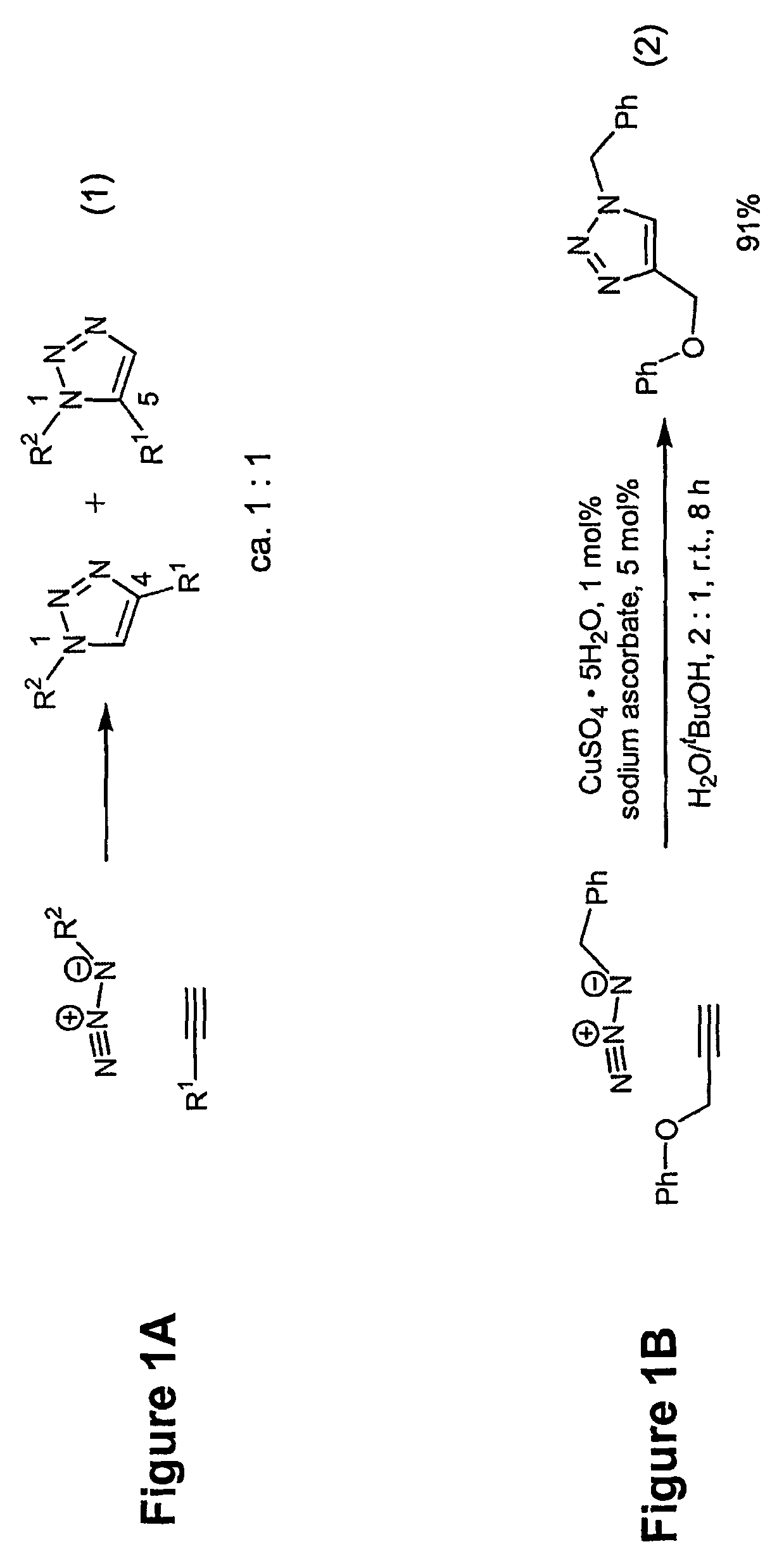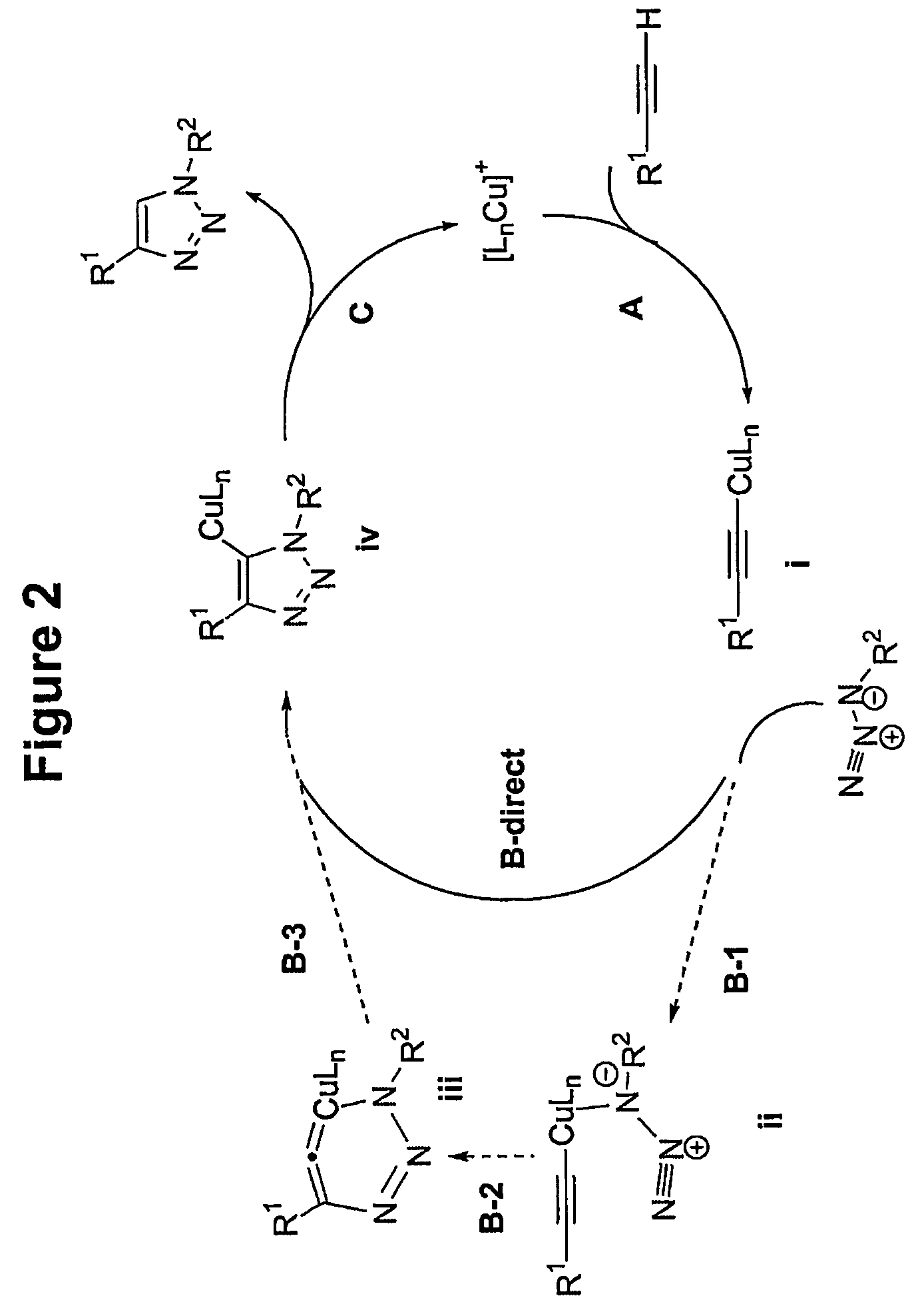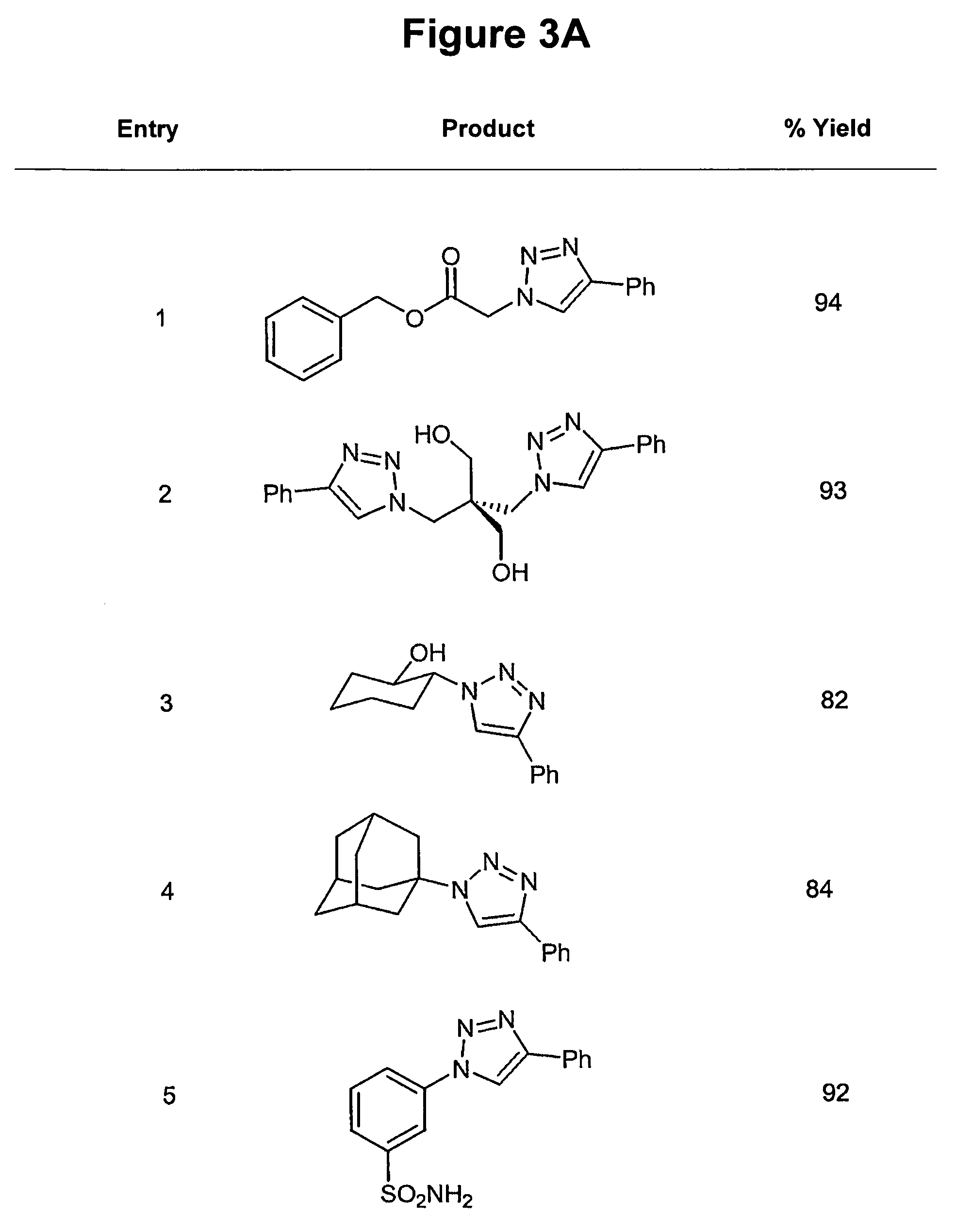Copper-catalysed ligation of azides and acetylenes
a technology of acetylene and copper, which is applied in the direction of organic chemistry, physical/chemical process catalysts, organic compounds/hydrides/coordination complex catalysts, etc., and can solve problems such as special attention it deserves
- Summary
- Abstract
- Description
- Claims
- Application Information
AI Technical Summary
Benefits of technology
Problems solved by technology
Method used
Image
Examples
Embodiment Construction
[0033]The process is experimentally simple and appears to have enormous scope. While a number of copper(I) sources can be used directly (vide infra), it is disclosed that the catalyst is better prepared in situ by reduction of CuII salts, which are less costly and often purer than CuI salts (CuSO4.5H2O serves well). As the reductant, ascorbic acid and / or sodium ascorbate proved to be excellent, for they allow preparation of a broad spectrum of 1,4-triazole products in high yields and purity at 0.25-2 mol % catalyst loading. For a review of reactions of L-ascorbic acid with transition metals see M. B. Davies Polyhedron 1992, 11, 285-321 and references cited therein; redox properties of ascorbic acid are summarized in C. Creutz Inorg. Chem. 1981, 20, 4449. The reaction appears to be very forgiving and does not require any special precautions. It proceeds to completion in 6 to 36 hours at ambient temperature in a variety of solvents, including aqueous t-butanol or ethanol and, very imp...
PUM
| Property | Measurement | Unit |
|---|---|---|
| temperature | aaaaa | aaaaa |
| time | aaaaa | aaaaa |
| dipole | aaaaa | aaaaa |
Abstract
Description
Claims
Application Information
 Login to View More
Login to View More - R&D
- Intellectual Property
- Life Sciences
- Materials
- Tech Scout
- Unparalleled Data Quality
- Higher Quality Content
- 60% Fewer Hallucinations
Browse by: Latest US Patents, China's latest patents, Technical Efficacy Thesaurus, Application Domain, Technology Topic, Popular Technical Reports.
© 2025 PatSnap. All rights reserved.Legal|Privacy policy|Modern Slavery Act Transparency Statement|Sitemap|About US| Contact US: help@patsnap.com



